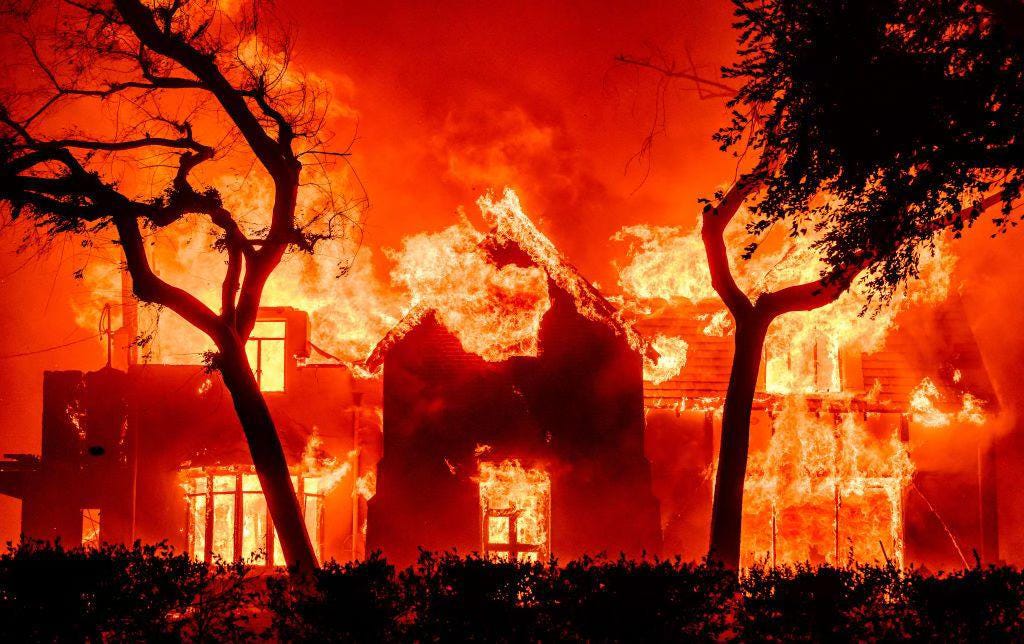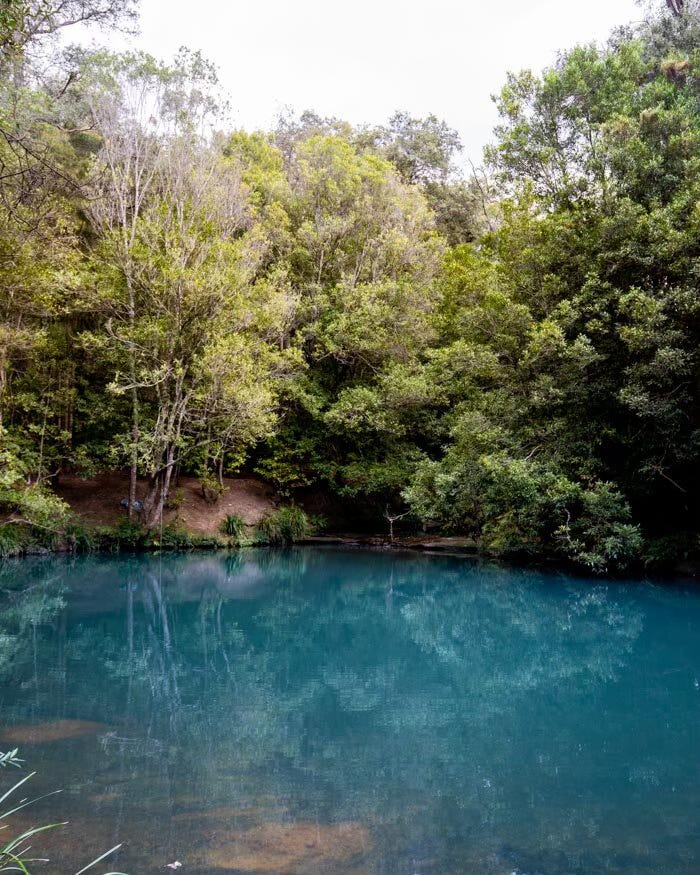The Horrors of January and Obedience
Article 2.1(a) of The Paris Agreement is a more fantastical read in 2025 than The Sesame Street Library Volume 10 I read to my toddler.
Remember 2015? China started claiming and building artificial islands in the South China Sea. One million Syrian refugees sought safety in Europe (Australia increased its total refugee intake to 12,000 in response - you’re right ScoMo, how good is Australia?). Abbott got rolled. Volkswagen’s emissions busting diesel cars weren’t emissions busting at all. And Mick Fanning beat off a shark on live television.
As well, The Paris Agreement was adopted by 196 parties in 2015. Article 2.1(a) states: Holding the increase in the global average temperature to well below 2°C above pre-industrial levels and pursuing efforts to limit the temperature increase to 1.5°C above pre-industrial levels, recognising that this would significantly reduce the risks and impacts of climate change.
How antiquated this seems now.
January just blasted through the latest monthly heat record. This time 1.75°C above pre-industrial temperatures. This matters for a tonne of reasons.
Firstly, July is generally considered the hottest month of the year as that is peak summer in the Northern Hemisphere where there is more land (i.e. more land = more heat). So for January - a full half year away from the usual hottest month of the year - to be the hottest on record was described as ‘surprising’ at Copernicus, the European climate change service. Surprising seems like one of the all time great under-statements.
The good news doesn’t stop though. The Godfather of Climate Science James Hansen’s latest work outlines how humanity’s (and with it every other species) faustian bargain has arrived. Simply, he and his team have concluded that as air pollution reduces (largely due to a mostly-unknown 2020 global shipping agreement to reduce sulphur in fuel), warming can really get moving. The premise being that sulphur aerosol-based pollution has an overall cooling effect on the atmosphere. No longer! He and his team state with confidence that the 2°C breach will happen by around 2045, and that “the 2°C target is dead”.
I spend a fair bit of time trying to help others understand what esoteric and abstract climate numbers and temperature figures mean in the here and now. Honestly, I struggle. I point to individual events like fires and typhoons and floods and cyclones and hurricanes and heat domes. Each leaves a fingerprint of devastation. So do the more intangible shifts and changes. The Panama Canal is in drought and significantly reducing freight traffic (which as an outcome is maybe a good thing in the grand scheme of things). The Great Barrier Reef is now at ‘catastrophic’ levels. All while experimental research indicates trees are operating close to their thermal limits and further increases in temperatures reduces their ability to uptake carbon from the atmosphere. None of this is good. At all. It is loss, it is damage. It is devastation at personal, family, neighbourhood, community, bioregion and planetary levels. Over and over. And the crisis is here, and encroaching further.
Neil DeGrasse-Tyson recently put out his latest ‘How I think about Climate Change’ recording. For someone regarded as infitnely animated, enthusiastic and curious, his take is bleak. “Get ready for the new normal. And for most places on Earth, it’s not going to be pretty.”
Holding the increase in the global average temperature to well below 2°C above pre-industrial levels and pursuing efforts to limit the temperature increase to 1.5°C above pre-industrial levels, recognising that this would significantly reduce the risks and impacts of climate change.
The Pliocene Epoch - a period that lasted from 5.3 to 1.8 million years ago - was the last time greenhouse gas parts per million (PPM) were at levels of 400 or above - like they are today. Approximately three million years ago humans experienced similar atmospheric conditions to now. I mean, approximately three million years ago Australopithecus afarensis experienced similar atmospheric conditions to now.
Another bit of new research suggests that at this time temperatures were about 4.1°C to 4.8°C above pre-industrial levels. I cannot stop thinking about David Wallace-Wells’ work, and his absolute must-read Uninhabitable Earth. At least, read - really read, slowly, noticing your reactions and what sensations rise up as you do - his annotated New York Magazine essay on what a 4°C future involves. To warm you up, here’s the first paragraph.
It is, I promise, worse than you think. If your anxiety about global warming is dominated by fears of sea-level rise, you are barely scratching the surface of what terrors are possible, even within the lifetime of a teenager today. And yet the swelling seas — and the cities they will drown — have so dominated the picture of global warming, and so overwhelmed our capacity for climate panic, that they have occluded our perception of other threats, many much closer at hand. Rising oceans are bad, in fact very bad; but fleeing the coastline will not be enough.
Mother Nature is getting down to business re-organising herself, and she’s wearing state of the art Speedo swimsuits to indiscriminately break any and every record. Worse is here. Worse is coming.
This week I had the great privilege to spend a bit of time with Zack Schofield. He’s best known for his famous cameo on Sky News (Fark Murdock*) Insanity and his interview with the remarkably ill-qualified Laura Jayes. Besides taking time to embarrass idiots, Zack is an organiser at Rising Tide, a brilliant and brave organisation that is about not only developing campaigns and resisting fossil fuel activities in the Hunter Region, but importantly about building new forms of community cohesion, participation and power. I sat in awe at the power of his courage as he and his fellow Rising Tide members actively resisted and then overcame illegal NSW government protest ban efforts.
Rising Tide makes clear three very clear, very specific demands:
Immediately cancel all new fossil fuel projects;
Tax fossil fuel export profits at 78% to fund community and industrial transition, and pay for climate loss and damage; and
End all coal exports from Newcastle – the world’s largest coal port – by 2030.
All science-aligned. All necessary. All controversial. All radical. All implausible.
Holding the increase in the global average temperature to well below 2°C above pre-industrial levels and pursuing efforts to limit the temperature increase to 1.5°C above pre-industrial levels, recognising that this would significantly reduce the risks and impacts of climate change.
The ease to dismiss what is now needed is exactly that - easy. The unfathomable scale of rapid, urgent, everything everywhere change is exactly that - unfathomable. Yet it is what we must do to somehow not experience a changing climate that is beyond the worse that you can think.
I was sent a recording of Matt Damon repeating a speech a guy called Howard Zinn gave in 1970. Zinn was an American historian, author, professor, playwright, and activist whose speech The Problem is Civil Disobedience resonates today. It is truly worth a watch or a read. One line stood out to me though as I and probably you too struggle on a daily basis in whatever context it is to find relevance, connect to existing paradigm ‘value drivers’ and somehow cast a spell on a disinterested-but-more-powerful colleague that climate change is a crisis beyond all imagination.
But you have to get a little detached, and then come back and look at the world, and you are horrified.
The present is horrifying. What is coming is even more so.
January 2025 temperature records are horrifying. Trees not able to absorb carbon in a hotter climate is horrifying. 2°C by 20245 is horrifying. The LA fires are horrifying. That the Paris Agreement is a relic less than ten years after it was signed is horrifying.
Yet demands to immediately cancel all new fossil fuel projects are a horror too much to bear? Impertinent behaviour with a colleague who waters down or avoids the reality of a new normal is horrible behaviour?
The one question is, what am I remaining obedient to?
Not All Heroes Wear Capes - Zack Schofield is Organising New Futures
Zack Schofield is on the show and blew me away. Courageous, incisive and on a mission to change the future of the Newcastle region and with it disrupt and dismantle the fossil fuel sector and its ties to vested politicians and media interests.
The role of protest has always mattered, and it is especially so for a safe climate future.
Finding Nature Finds Nature - Barrington Tops Cultural Burn Expedition
Finding Nature is finding nature. From 28 February - 2 March we will be taking a small group of sustainability and impact-oriented professionals to Barrington Tops at the invitation of elders from the Worimi people.
The intent of the expedition is threefold; 1) Take a group up to engage with the question; 'how can we support the building of First Nations food knowledge and products?', 2) Observe and support a cultural burn to help return the Bularr-Gulga Watuun, 3) Connect with self, each other and Country through designed activities and experiences
Details here.
Finding Nature Finds Nature - The Gibberagong Track & A Passive House
At the start of each new season, we convene in nature for an experience that is replenishing, awakening and grounding. This Autumn experience will be no different.
Firstly, we will walk the Gibberagong Track in Ku-Ring-Gai Chase National Park followed by a tour of Chris Nunn’s PassivHaus AND lunch served by gus_tronomy. Real nature, time in and a tour of the first certified Passive House Premium building in NSW followed by excellent food. All with terrific company.
Tickets here.







